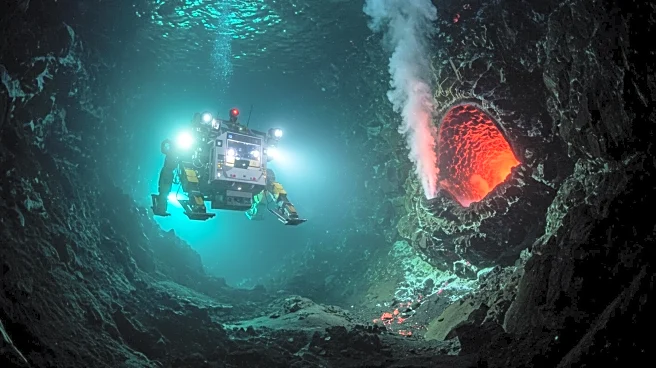Rapid Read • 8 min read
Researchers from the University of Texas at Austin have discovered a geological phenomenon occurring beneath North America, where the deep roots of the continent are slowly dripping away in blobs of rock. This process, known as 'cratonic thinning,' is driven by the remnants of an ancient tectonic plate, specifically the Farallon Plate, which began subducting beneath North America approximately 200 million years ago. The study, led by Junlin Hua, utilized full-waveform seismic tomography to visualize these rock formations and their connection to the Farallon Plate. The phenomenon is occurring at a glacial pace and poses no immediate threat to the surface landscape, providing scientists with a unique opportunity to observe continental reshaping in real time.
AD
This discovery is significant as it enhances the understanding of continental evolution over geological time. It reveals that even ancient and stable structures like cratons are subject to dynamic processes beneath the Earth's surface. The findings could have implications for understanding how continents form, break, and recycle into the Earth. The research also underscores the importance of advanced seismic imaging technologies in uncovering hidden geological processes. The study's insights could inform future research on tectonic activity and its impact on continental stability, potentially influencing geological and environmental policies.
As the research progresses, scientists may continue to refine seismic imaging technologies and develop more detailed models of Earth's interior. This could lead to further discoveries about the dynamic processes shaping our planet. The study's findings may prompt additional research into the effects of ancient tectonic plates on current geological formations. Researchers might also explore the broader implications of cratonic thinning on continental stability and its potential impact on natural resources and geological hazards.
The study highlights the complex interplay between ancient geological structures and current tectonic activity. It raises questions about the long-term stability of continental formations and the potential for similar processes in other regions. The research also emphasizes the importance of interdisciplinary collaboration in geosciences, combining seismic data analysis with geological modeling to uncover new insights into Earth's interior dynamics.
AD
More Stories You Might Enjoy










